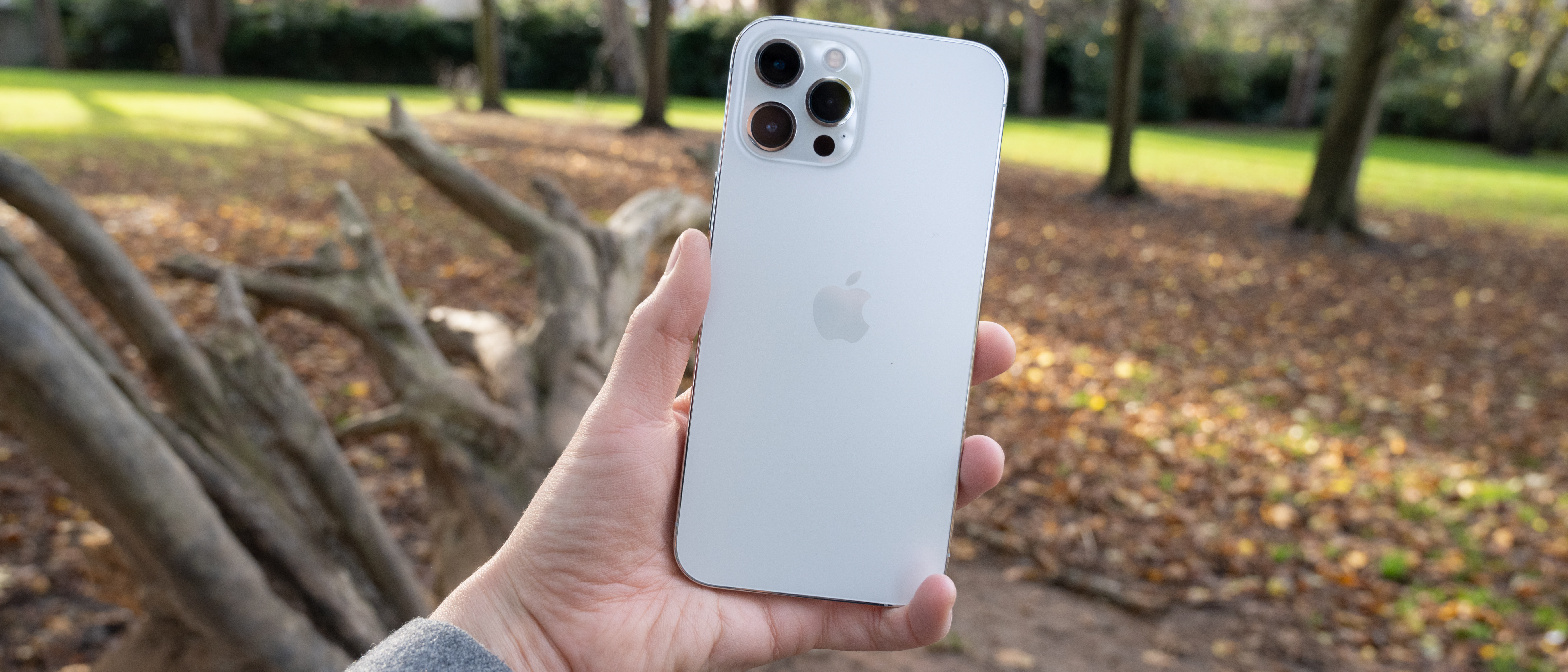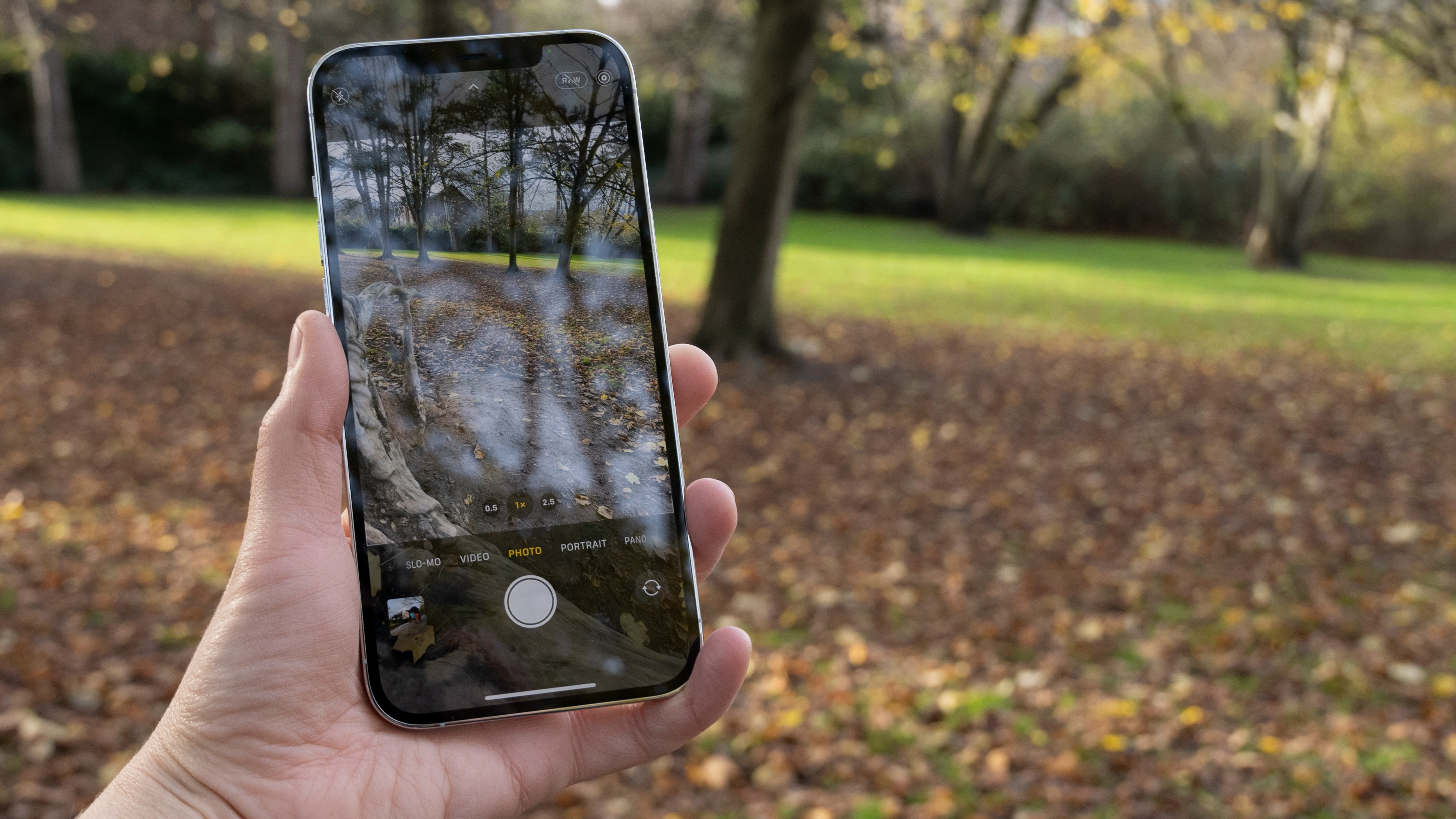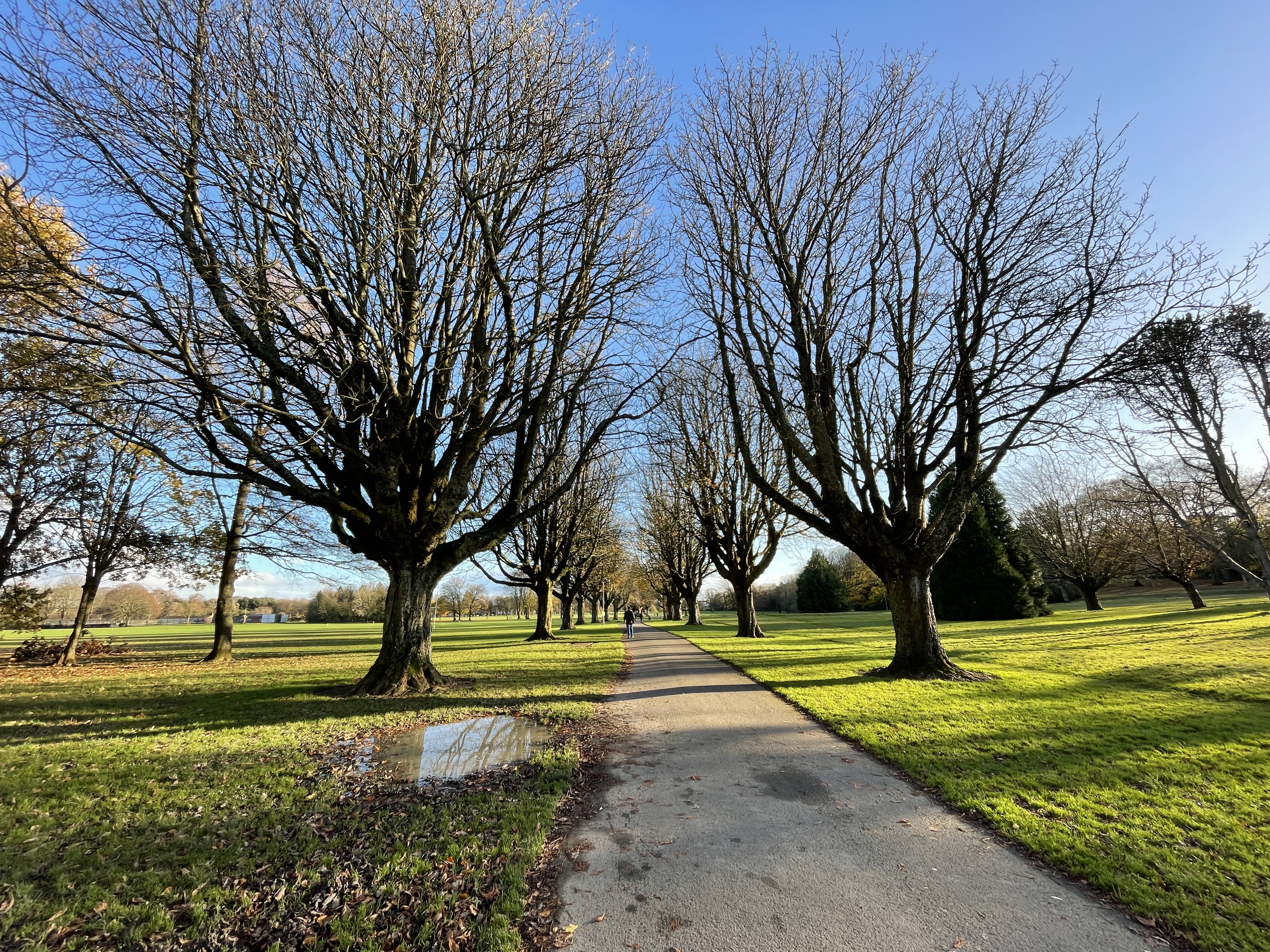Digital Camera World Verdict
With the iPhone 12 Pro Max, Apple delivers its best performing smartphone yet, with its best performing camera onboard. There’s a lot to like for both everyday snappers and more seasoned photographers, though for the latter we’d still like to see some more advanced controls. The differences between the iPhone 12 Pro are not as vast as we might have thought or expected, so if you prefer a more pocket-friendly phone, you won’t be missing out too much by plumping for the smaller (and less expensive) option.
Pros
- +
Minimum storage option now starts at 128GB
- +
Flexible camera screen
- +
Large screen displays apps and photos well
Cons
- -
Simple native camera app
- -
Handling a little unwieldy for some
- -
Charging adapter / headphones not included in the box
Why you can trust Digital Camera World
This year, not only are there four different new iPhone models, but there’s also four different camera variations. In the past, Apple has used the same camera unit in both its standard-sized “Pro” model, as well as the Max. This year, however, there are some key differences between the two which enthusiast photographers may be keen to take note of.
We’ve already reviewed the iPhone 12 Pro to bring you our verdict on that, but having now had the opportunity to use the iPhone 12 Pro Max, we can also come to a conclusion on its larger sibling. This is arguably the very best option for photographers, with a range of features designed to entice photographers willing to pay the top premium for it.
iPhone 12 Pro Max: Features
At first glance, the iPhone 12 Pro Max’s camera set up doesn’t seem too different from its predecessor (the iPhone 11 Pro Max), or indeed its smaller sibling, the iPhone 12 Pro. There’s a triple-lens set up, however there are some key divergences to take into consideration.
While both the 12 Pro and the 12 Pro Max have 0.5x (13mm equivalent) and 1x (26mm equivalent) lenses, the sensor behind the 26mm lens is larger in the Max. It also features sensor-shift stabilisation, which should make the bigger model better equipped to handle low light shooting. Another variant is the telephoto lens, which is a 2.5x optic on the Max, giving an equivalent of 65mm - compared with the 2x (56mm equivalent) lens of the standard Pro.
Other improvements when comparing the 12 Pro Max to its predecessor can also be found on the 12 Pro. That includes the addition of a LiDAR scanner, used to measure distance and improve autofocusing speed in low light. There’s also been some software changes, such as the addition of Night Mode for portrait, and probably most exciting for photographers, the ability to capture images in Apple’s ProRAW format. At the time of writing, this feature is still not available as standard, but can be accessed if you download a public beta of the latest iOS update.
4K recording at 60p is not a new feature, but there’s now the capacity to record in Dolby Vision HDR, as well as Night-Mode time-lapse to give it an extra boost. Dolby Vision HDR requires a compatible device to view the footage in all its glory - such as an iPhone, or a Mac running OS Catalina.
The best camera deals, reviews, product advice, and unmissable photography news, direct to your inbox!
The iPhone 12 Pro Max’s screen has increased slightly compared with the iPhone 11 Pro Max, being 6.7-inches in size. It’s slightly taller than its predecessor, but it’s a little narrower and taller, and weighs the same overall. There’s also now a Ceramic Shield front, which should make it better at withstanding being dropped, while it’s a little more waterproof than before.
In terms of non-camera related features, probably the biggest news for the iPhone 12 series is the addition of 5G connectivity. This means you get access to super fast download (and upload) speeds and could be a crucial deciding factor for many thinking about upgrading to the latest models - iPhones have never had 5G connectivity before.
• See iPhone 12 Pro Max vs Samsung S21 Ultra
iPhone 12 Pro Max: Build and Handling
There’s no getting around the fact that the iPhone 12 Pro Max is a very large phone, which will either be a good thing or a bad thing, depending on your personal preference - or perhaps your physical attributes. Those with larger hands will likely find the device very comfortable, while those with smaller digits may struggle to use the phone easily for some activities, such as texting. Then there’s the fact that it’s difficult to fit this in a small pocket - making it a lot more unwieldy than the standard iPhone 12 Pro. On a more positive note, it’s fairly impressive that while the 12 Pro Max has a larger screen than its predecessor, it’s managed to keep the same weight and is in fact slimmer than before.
The design of the phone has also drawn from some of Apple’s older models, going back to the squared off edges we last saw in the iPhone 4 series. It’s quite a striking look that won’t appeal to everyone, but works quite well.
Anyone who has ever used an iPhone before will already know that the native camera app is pretty simple. It’s very easy and straightforward to use, but many have long-lamented that there aren’t some more advanced controls for enthusiast photographers. That said, the addition of Apple ProRAW is a step in the right direction that perhaps hints that Apple is open to tweaking this to appeal more to serious photographers.
As it is, you’ll probably find yourself using the standard “Photo” section of the app for almost all of your shots. With this, you can choose between any of the three lenses, as well as tweak some options such as flash, and turning “Live Photos” on or off. The most advanced controls you’ll find including access to exposure compensation and choosing a different aspect ratio. Still, if you want deeper controls, there are dozens of different third-party apps available to experiment with.
Since our review of the iPhone 12 Pro, the beta version of iOS 14.3 has become available, which means we (and you) can try out ProRAW shooting. While it’s important to note that this software isn’t necessarily yet finalized, it gives us a good idea of how it’s likely to perform. If you have this version of the software, you’ll need to enable ProRAW shooting in the main menu, after which, the option will then appear within the camera app. You’ll need to switch it on for each shooting session, which saves you taking up lots of space on your phone with raw files of pictures of your shopping list and your cat, but it can be a pain remembering to do it each time. It’s also worth noting that once switched on, it switches off Live Photos and doesn’t record a JPEG/HEIC image simultaneously. Right now, that means that some apps don’t recognize the raw (DNG) files - such as Instagram. It could be that this set up is tweaked for the final version of the software, or it could be that Instagram adapts to accept DNG files, but for now, you’ll need to convert any raw files you wish to upload - something you can do quickly in camera.
Some software features remain the same as with the iPhone 11 Pro Max. One such useful feature is the ability to show you what’s going on outside the frame, by using whichever lenses are not in use. This can be helpful for framing your shots, or avoiding taking a shot just as someone is about to wander into frame. You can also have the phone record this extra data and use it (up to 30 days) later to adjust your compositions. Another kept software feature is Portrait mode, which can be used to create a shallow depth of field effect, with any subject.
iPhone 12 Pro Max: Performance

Despite there being some differences between the iPhone 12 Pro and the iPhone 12 Pro Max, examining images taken side by side reveal that in practice the results are by-and-large very similar. The most obvious difference is the longer focal length of the telephoto lens, but that’s not to say one is “better” or “worse” than the other - it just depends on whether you’d prefer to have a longer or shorter lens available.
There’s also not a dramatic leap in quality when comparing images from the iPhone 12 Pro Max to those from the iPhone 11 Pro / Max, so if you’re already in possession of one of those phones, the camera quality alone is unlikely to be enough to make it worthy of an upgrade.
Image quality in JPEGs from the phone is excellent, and as we found with the iPhone 12 Pro, this is a very well-performing camera. Colors are very well-rendered, being bright and punchy without being unrealistic, while the overall impression of detail is also very good. Images look particularly good when displayed on the larger screen of the iPhone 12 Pro Max, too.
When it comes to low light shooting, we might expect the iPhone 12 Pro Max to produce better or cleaner results than the 12 Pro, considering it has a larger sensor and sensor-shift image stabilization. In practice, results are remarkably similar, with only small details perhaps noticeable if you really closely scrutinize shots at pixel level. The average person is unlikely to be able to spot a huge degree of difference between the two - while it’s also arguable that image stabilization is less needed in a smaller device which is easier to keep still in the first place.
All that being said, Night mode is an impressive performer, especially with the standard or the telephoto lens. Night Mode Portrait is useful for creating artistic shots in low light, so it’s good to see the two modes mixed together. The ultra wide angle lens doesn’t stand up so well when using Night Mode - so it’s best avoided unless you’re really desperate to shoot at that particular angle.
Now we’ve had a chance to play with the raw files via the iOS 14.3 beta, we can see that they withstand some fairly heavy editing in software such as Adobe Camera Raw. Although it’s unlikely that you’ll want to make a lot of edits to most of your shots, having this capability here is helpful for the odd occasion when it might be more necessary - such as in unusual lighting conditions.
We’ve long been impressed by the iPhone’s capability for recording high-quality video, and the iPhone 12 Pro series builds on that. The Dolby HDR video really pops from the screen - especially in bright and high-contrast situations. Where the light is a little flatter, it’s harder to tell the difference between having it switched on, and not.
iPhone 12 Pro Max: photo samples

iPhone 12 Pro Max: video samples
iPhone 12 Pro Max sample video: 4K HDR mode at 60p
iPhone 12 Pro Max sample video: 4K Standard mode at 60p
iPhone 12 Pro Max: verdict

The iPhone 12 Pro Max is an excellent smartphone, and anybody who is looking for a device that is well suited to photography will likely be happy with their choice.
That said, if you’re already a user of an iPhone 11 Pro Max, upgrading to the latest one on the strength of the camera updates alone is probably not hugely worth it for most people. It’s an improvement in a few respects, but it’s not a massive overhaul, with some improvements, such as Dolby HDR video, only being particularly appealing to a niche crowd.
However, there are other reasons, which have little to do with the camera capability which may prompt you to upgrade. The biggest is likely to be 5G connectivity, which if you’re somebody using your phone a lot outside, could be a real bonus to have.
The larger screen size of the iPhone 12 Pro Max is hard to objectively judge - some will prefer it, some won’t - if at all possible, it’s worth getting your hands on both sizes to see which you prefer (which we know is easier said than done in the current climate). If you’re thinking of opting for the Max in order to benefit from a better camera but otherwise might prefer the smaller device, the differences - or at least the results - probably aren’t enough to make it worth it.
In short, the iPhone 12 Pro Max is an excellent device and there’s lots to love about it. If you are currently shooting with an iPhone XS or before, you’ll likely notice a jump in image quality, while if you’ve got a more recent model, other improvements are more likely to catch your eye.
Read more
Best iPhone for photography: from the iPhone 7 Plus to 11 Pro
Best camera phone: which is the best smartphone for photography?
Best phablet
Best stylus for iPhones and iPads
Best phone cases: protect your camera phone in style
Amy Davies has been writing about photography since 2009, and used to be a colleague on Digital Camera magazine and Techradar.com. She now works as a freelance journalist writing for nclude Amateur Photographer, Stuff, Wired, T3, Digital Photographer, Digital Camera World, TechRadar, Trusted Reviews, ePhotozine and Photography Blog. She has an undergraduate degree in journalism and a postgraduate diploma in magazine journalism, both from Cardiff Journalism School.













